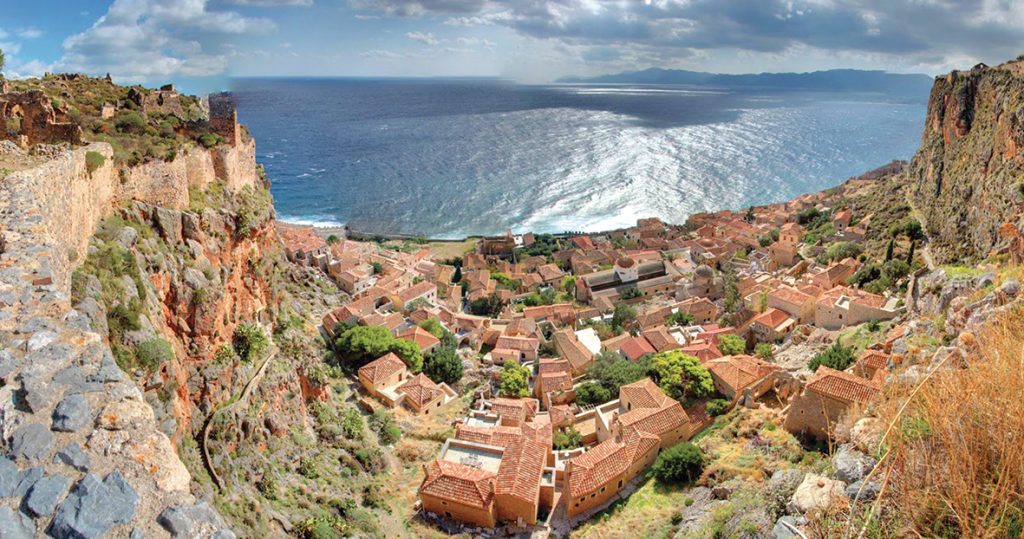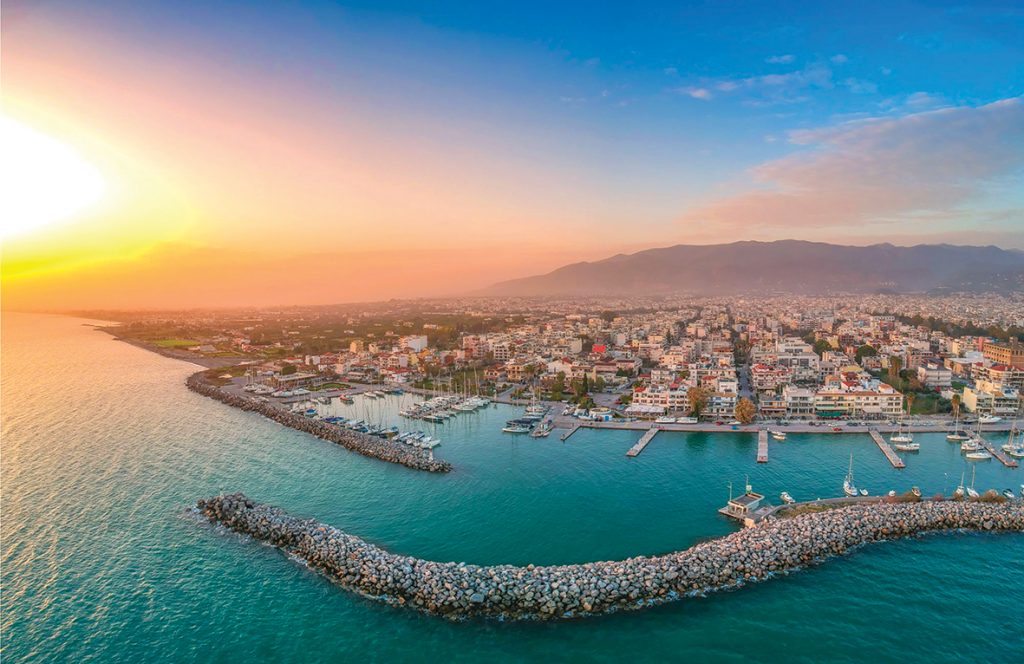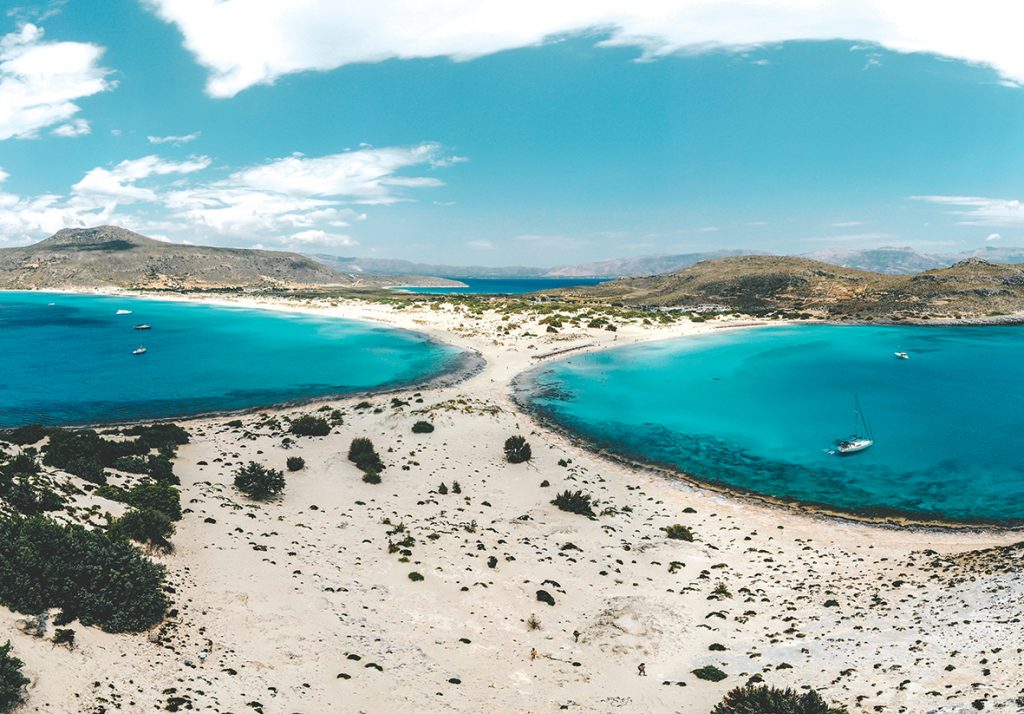When you think of Greece it’s often the islands that spring to mind. But the Peloponnese, a three finger-shaped peninsula that hangs from the mainland, offers all the romantic ruins, dramatic beaches and quiet hotels you’ve been dreaming of too.
Begin your Greek adventure with travelling to Greece’s former capital Nafplio, one of the jewels of the Peloponnese and then on into the Mani, an area full of typical Greek villages and small towns. Spectacular views greet every turn in the road, from the myriad olive trees around Kalamata, the soaring mountain peaks of Mount Taygetus or the vivid blue and green of the seawater, it is impossible not to fall in love with Greece. Add in some typical Greek experiences such as some Greek dancing, olive oil indulgence, sailing and cookery lesson and you have the recipe for the perfect holiday. Yamas!

Why go to the Peloponnese? If you’re looking for the real Greece, rent a car and drive around the leaf-shaped peninsula of the Peloponnese – it’s proudly declaimed its Greekness since time immemorial. Familiar names such as Olympia (the birthplace of the Olympics) and Mycenae evoke the Homeric legends of ancient Greece, yet it’s lesser-known towns like Monemvasia and Mistras that show the centuries’ Hellenic continuity.
Nafplio and the Argolid
The port of Nafplio was the first capital of modern Greece from 1828 until 1834 when King Otto decided to decamp to Athens. Today it ranks as one of the most delightful towns in Greece and competition is stiff on that front. Not content in being superbly sited under two castles – the Venetian fortress of Palamidi and the ancient acropolis of Akronafplia – Nafplio also claims a third: the photogenic fort of Bourtzi set on an island in the harbor.
Sparta and Laconia
Given that this region has bequeathed the words “laconic” and “spartan” to the world, it’s no surprise to find that the warlike Spartans didn’t leave much behind, so there’s not much to see in the modern capital of Laconia. Stay here for a range of sights nearby, most notably Mistras, reached by bus in half an hour. This is a stunning, never-to-be-forgotten Byzantine ghost town complete with cobbled streets, frescoed churches, medieval mansions and Imperial palaces. Although the climate is perfect in spring and autumn, avoid high summer.

Kalamata and Messenia
Kalamata, the capital of the district of Messenia, may be famed for its olives, but, once there, you’ll fall in love with the longest city beach in the whole of Greece spanning just under two miles. Kalamata also claims the only international airport in the Peloponnese, the gateway to Sparta and the Laconic coast, the Mani peninsula and the Messenian gulf resorts. Yet, before you set off, linger on for a bit to enjoy the city’s California-style unfussy disposition.
Mani
Famed Mani, the long middle “finger” of the three-pronged Peloponnese peninsula is dominated by imposing Mount Taygetus that gets a namecheck as far back as the Odyssey. Spectacular mountain passes, deep limestone caves, vast pelagic views, evergreen citrus trees and tall defensive towers dot the land of the Maniots, a tough mountain people who kept their autonomy even under the Ottoman occupation in 1770.
Patras and the North
If you’re arriving by ferry from Italy, then your first impression of Greece will be formed in Patras and it’s going to be a pleasant one. Greece’s third-largest city has much to commend it, including the ruins of a castle, a Roman Odeon, a museum with no fewer than 14 Roman mosaics and a 600-year old Turkish bath, the oldest in Europe still in operation. Plus, as the large university can vouch, it has a more than decent nightlife centered around a large, pedestrianized street grid.
What to eat and drink in the Peloponnese
The Peloponnese is one of the most fertile areas in Greece so you should expect gallons of freshly squeezed fruit juices along with kayanás (scrambled eggs with tomatoes) for your breakfast. Indeed, oranges are in such supply that they’re used to flavour sausages in Kalamata as well as syrupy sweets like portokalópita (orange pie). Olives and olive oil are plentiful and are used liberally in salads and in cooking, including delicious vegetable dishes called laderá. Wine features heavily alongside olive oil. The plain of Nemea grows the famed Agiorgitiko variety (red, dry) while Mantinia in the interior produces Moschofilero (white, dry). The region around Monemvasia gave its name to malmsey wine – a corruption of “Malvasia”, itself a Venetian corruption of “Monemvasia” – which is currently making a comeback. The biggest wine region is, however, Achaïa, the department around Patras where you can taste aromatic white Muscats and sweet Mavrodafni reds.
Best beaches
Kalamata-Koroni-Finikounda-Methoni-Gialova-Costa Navarino
If you lust after the archetypal Greek island vibe, then the Messenian coast offers resorts and beaches aplenty. Costa Navarino is the most developed with Caribbean standards of service but try also Gialova just below for a more intimate experience. Between the two lies one of Greece’s main birdwatching wetlands featuring a chameleon sanctuary and Voïdokoilia, a perfect semicircle of a beach.

Best small towns and tiny islands
Kalamata-Sparta-Monemvasia-Neapoli-Elafonissos
Fly into Kalamata and take the Langhada pass to Sparta, a dramatic 38-mile (60km) hairpin-rich road over Mount Taygetus and one of Greece’s great road trips. A few hours’ drive further on rises “The Gibraltar of the East”: the rock of Monemvasia. Joined by a small causeway with the mainland, the rock hides the medieval, fortified town of Monemvasia, a Byzantine time bubble if ever there was one.